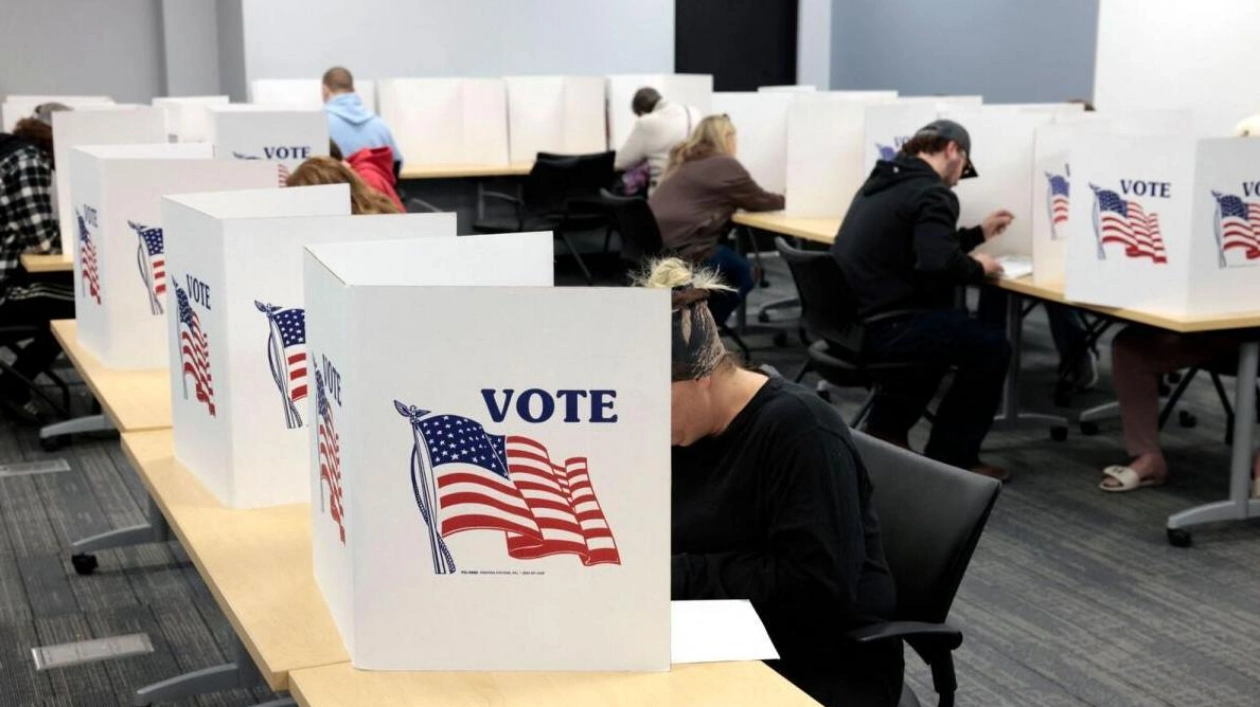On the final day of early voting for the general election in Michigan, citizens exercised their democratic right. Photo: AFP
With the race entering its closing stages, the focus is on the seven battleground states that could determine the outcome of the 2024 US presidential election. However, early voting results in these swing states may not accurately predict whether Democratic candidate Kamala Harris or Republican rival Donald Trump will emerge victorious, due to varying vote counting rules and peculiarities in several key states.
In the 2020 election, some states experienced a 'red mirage,' where Trump initially led on election night, only for a 'blue shift' to occur as mail-in ballots, which were more likely to favor Democrats, were counted. Experts had anticipated this, but Trump still exploited the shift to propagate his baseless claims of election fraud. This scenario could repeat this week, particularly in states like Pennsylvania, Michigan, and Wisconsin.
Conversely, a 'blue mirage' could also occur, showing a strong initial result for Harris, only for a 'red shift' to reverse the trend, especially in North Carolina and Georgia. The final outcome will hinge on how and when the large volumes of mail-in or early ballots are processed and counted in each state.
Another factor is that Democrats are more concentrated in urban areas, where vote counting tends to be slower. There are seven battleground states that are likely to decide the election, each with its own rules for handling and counting ballots. Here's what to anticipate on Election Day and beyond:
Pennsylvania
Pennsylvania did not declare a winner for four days after Election Day in 2020, as officials processed a large backlog of mail ballots. The state is among a few that do not allow election workers to process or tabulate mail ballots until 7am ET on Election Day, meaning it could take days to determine the outcome again this year. With more Democrats voting by mail, early results based on in-person Election Day votes will likely show Trump ahead, but his lead will probably diminish as more mail ballots are counted.
Wisconsin
Similar to Pennsylvania, Wisconsin does not permit election officials to process or count mail ballots until the morning of the election, leading to delays in reporting early vote results. Additionally, many of the state's largest cities transport mail ballots to a centralized location for processing, which can result in significant batches of votes being reported simultaneously in the early hours of Wednesday. In 2020, Trump and his allies falsely claimed fraud after Milwaukee reported nearly 170,000 absentee ballots around 3:30am CT, giving Biden a significant lead for the first time. This pattern is likely to repeat in 2024.
Georgia
Early in-person voting is prevalent in Georgia, where officials expect 65% to 70% of ballots to be cast at early polling locations. Absentee or mail ballots, which may account for around 5% of the vote, can be processed two weeks before the election, but counting must wait until Election Day. All early votes must be counted and reported by 8pm ET on election night. Ballots from overseas and military voters will be accepted up to three days after the election if postmarked by November 5.
Arizona
Voting by mail is highly popular in Arizona; nearly 90% of voters cast their ballots early, mostly by mail, in 2020. Election officials in Arizona can begin processing and tabulating mail ballots upon receipt, but results cannot be released until one hour after polls close. Mail ballots dropped off on Election Day cannot be processed until the polls close, which can take days to count.
Michigan
Since the 2020 election, Michigan has introduced early in-person voting and allowed jurisdictions with more than 5,000 people to begin processing and tabulating mail ballots eight days before Election Day. Smaller jurisdictions can do so the day before November 5. These changes aim to expedite the reporting of results compared to 2020, when mail ballots could not be processed in advance.
North Carolina
Election officials start processing and scanning mail ballots ahead of Election Day. After polls close, the first reported results will likely be mostly mail ballots and early in-person votes. Election Day votes will be counted and reported throughout the evening, with full results expected by midnight. If the election is close, the outcome in North Carolina may remain uncertain for a week or more.
Nevada
Nevada's slow vote counting in 2020 led to numerous memes, but officials say changes since then should speed up the process. Most notably, counties were permitted to begin processing and counting mail ballots on October 21. However, Nevada might still not be called swiftly due to the popularity of mail voting and the acceptance of late-arriving mail ballots.
Source link: https://www.khaleejtimes.com






